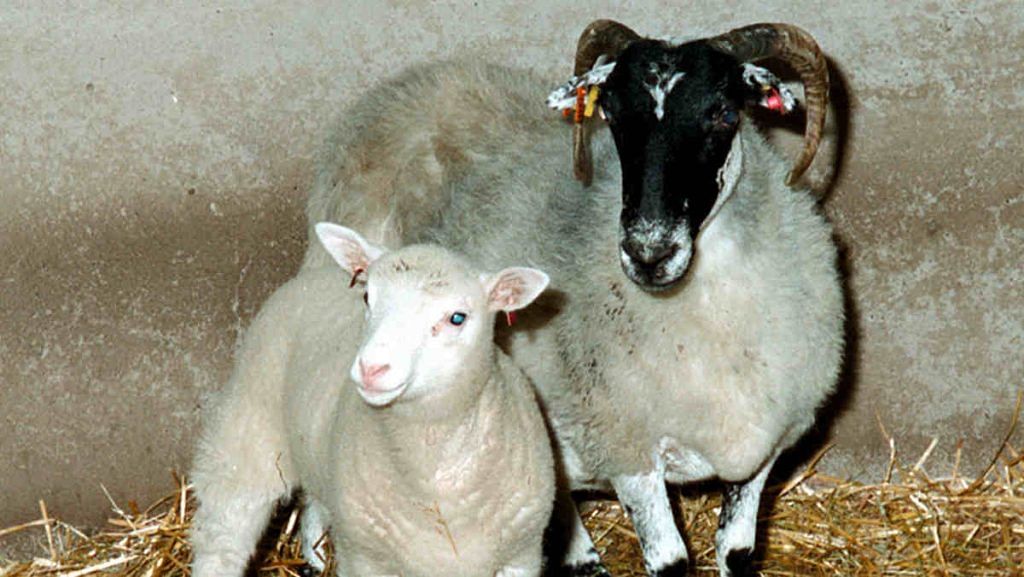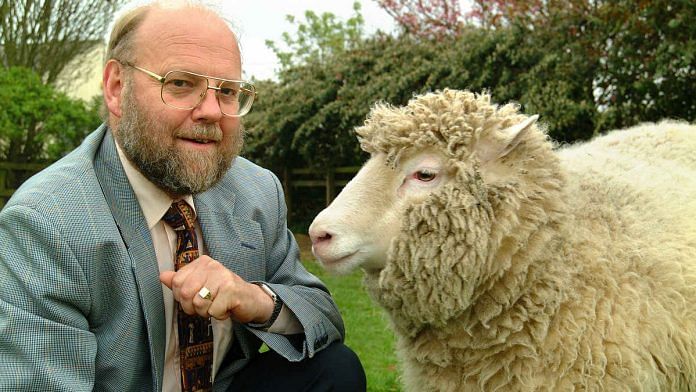Bengaluru: Ian Wilmut, the British embryologist who led the team that created Dolly the sheep passed away on 10 September at the age of 79. Dolly was the first mammal to be cloned from an adult cell, breaking barriers in science believed to be impossible.
Dolly’s birth at Edinburgh’s Roslin Institute in 1996 led to large-scale innovation in cloning techniques for cells. After her, several other mammals were cloned too, including cattle, horses, goats, dogs, cats, monkeys, pigs, mules, ibex, water buffaloes, wolves, and deer.
Most importantly, the creation of Dolly opened up new possibilities for cloning research, such as the development of stem cell therapy for diseases and the creation of organs for transplantation.
However, Dolly’s birth also raised fresh questions around bioethics and concerns over the potential for human cloning. Wilmut himself always maintained that he did not believe in human cloning, and that his work on Dolly was only intended to advance medical research.
Wilmut was preceded in death by his colleague biologist Keith Campbell, whom he credited with much of the scientific work that went into Dolly’s creation.
When he was asked how the sheep got her name, Wilmut reportedly said that the inspiration came from singer Dolly Parton. “Dolly is derived from a mammary gland cell (of a sheep) and we couldn’t think of a more impressive pair of glands than Dolly Parton’s,” he’d famously noted.
ThePrint looks at Wilmut’s legacy and the cloning advances made in biology since then, as well as the ethical questions around human cloning.
What is cloning & how it all started
Cloning is the process of making a genetically identical copy of an organism. While Dolly was the first mammal to be cloned, she was not the first animal to be cloned.
In one of the first steps towards cloning, German biologist Hans Driesch demonstrated that a single embryo could be artificially turned into twins in 1885. His experiment showed that when a two-celled sea urchin embryo was shaken vigorously, it would split into two different cells, each growing into a complete adult sea urchin.
In 1902, Nobel-winning German embryologist Hans Spemann, replicated this in more complex and “sticky” cells, using salamander embryos. In 1924, he and his student Hilde Mangold, were also able to show that if they squeezed a cell enough to push the nucleus to one side, it divided into baby cells on that side. After the formation of 16 such cells, which would eventually form a new salamander, they isolated the original cell with the nucleus.
These scientists were the first to take initial steps towards cloning by using amphibian embryos, demonstrating the birth of Siamese twin salamanders.
This method, known as somatic cell nuclear transfer, involves transferring the nucleus from a fully grown somatic (non-reproductive) cell to an egg cell from which the nucleus has been removed. If the cells multiply normally, they tend to produce a genetically identical copy of the original somatic cell.
Then, in 1952, scientists Robert Briggs and Thomas King transferred the nucleus from a tadpole embryo into a frog egg whose nucleus they had removed, creating tadpole copies that came from the same cell.
All of these experiments were performed on embryos, but it wasn’t until years later that nuclei from adult frog cells were used to create tadpole copies. This was when British scientist John Gurdon successfully used the nucleus of a tadpole intestinal cell with an adult frog egg to create tadpoles that were genetically identical to the source tadpole
Nearly two decades later, biologists knew enough to move on to mammalian egg cells, which are much smaller than amphibian cells and harder to work with. In 1975, J Derek Bromhall created the first mammal embryos— of rabbits— through nuclear transfer. It is believed that if Bromhall had placed the embryos back into a rabbit womb, a foetus would likely have developed.
The next step — the creation of a fully formed mammal through nuclear transfer— happened in 1984. Danish biologist Steen Willadsen separated a single cell from an 8-cell lamb embryo and fused it to an egg cell. As IVF had already become an acceptable technique, he transplanted the lamb embryos into the womb of a female surrogate sheep. Three live lambs were born.
Using the same methods, in 1987, researchers Neal First, Randal Prather, and Willard Eyestone created two calves, called Fusion and Copy.
However, until this point, cloning mammals was only done with embryonic cells. It was thought to be impossible to clone an animal directly from an adult somatic (non-reproductive) cell.
All that changed with the arrival of Dolly.
Why Dolly was a game-changer
Before there was Dolly, there were two groundbreaking little lambs called Megan and Morag.
In 1995, Wilmut and Campbell were conducting experiments using cultured sheep egg cells, nurturing them in a lab Petri dish. Their mission: to explore the possibility of cloning. They took the nuclei from these cultured cells and inserted them into egg cells whose nuclei had been removed, resulting in the birth of Megan and Morag— the first mammals to be cloned from differentiated, rather than embryonic, cells.
In their next experiment, they transferred the nucleus from a living adult sheep’s udder cell into an enucleated (or nucleus-less) egg cell. They attempted this 277 times, with embryos failing to develop in each attempt — except one. The single success was transplanted into a surrogate mother, and Dolly was born.

Dolly’s birth was a major breakthrough because it was thought to be impossible to clone an adult animal from a somatic cell. While embryonic cells are unspecialised and have the potential to become any kind of cell, somatic cells are already specialised into a particular type of cell, such as a muscle cell or a skin cell, and are not modifiable. A hair cell from an adult mammal, for example, and cannot be converted to an eye cell.
The birth of Dolly caused a stir in the public and media, bringing attention to the concept and ethics of cloning. More importantly, it also led to a surge in research, as scientists began to explore the potential of cloning to create cells for therapeutic purposes.
In 1997, Wilmut and Campbell collaborated with German biologist Angelika Schnieke to experiment with more sheep. They used cultured sheep cells from the lab and added the human gene called Factor IX (factor 9), which helps blood undergo clotting, to it.
This resulted in the birth of Polly, the very first sheep to produce Factor IX in her milk. The experiment showed that sheep and other mammals could be engineered for therapeutic purposes.
Subsequently, many other mammals were cloned using similar techniques to Polly and Dolly.
From 2001 onwards, notably, many groups attempted to revive extinct animals through cloning. In 2009, researchers tried to clone the extinct bucardo or Spanish mountain goat using existing goats. Only one kid survived, but died soon after birth.
As for Dolly, she lived for seven years, dying of a lung ailment in 2003.
Cloning & stem cell research
In 2007, another novel discovery was already showing promise: stem cells. These are “empty” cells produced in our bodies that can grow or differentiate into any type of cell, whether hair, eye, or nail.
That year, American biologist Shoukhrat Mitalipov and his team accomplished a remarkable feat. They created cloned embryos using skin cells from monkeys and then extracted embryonic stem cells from these embryos. This experiment demonstrated the potential for crafting specific cells that could be employed in treating human diseases.
Fast forward to 2013, and the same team used somatic cell transfer to create a human embryo that could be used as a source of embryonic stem cells.
Meanwhile, Wilmut in 2008 also announced that he was abandoning his processes of using adult somatic cells because of the promise shown by pluripotent stem cells. Pluripotent stem cells are embryonic stem cells that have been modified to grow into any other type of cell.
Today, stem cells play a key role in biology and medicine. Studying them and observing them can help us understand how diseases progress. They are also used to create bone cells, heart muscle, tissues, organs, nerves, and more, for therapeutic purposes. Stem cell treatments are today approved for cancer patients.
Ethical questions around cloning
Since Dolly’s birth, there have been debates both inside and outside the scientific community around the ethical implications of cloning, with various religious, philosophical, and biological viewpoints coming to the fore.
For instance, some of the arguments against cloning are moral in nature, opposing engineering of genetically identical humans. Some have argued that this may lead to the exploitation of clones as ‘less human’. There are also concerns of designer babies, where embryos can be modified to add or remove physical traits like height or eye colour.
On the other hand, those who argue in favour of advancing cloning research cite the fact that cloned cells can be used to treat diseases or to create organs for transplants.
Many proponents of somatic cell engineering, which involves modifying non-reproductive cells in adult humans to treat existing conditions, remain cautious about germline engineering. This latter approach entails modifying sex cells or embryos, potentially carrying these genetic modifications down through future generations.
So far, while stem cell research is actively done for therapeutic purposes, cloning animals for food or as pets has not been done, with the exception of cattle used for farming and meat. The first human is yet to be cloned.
(Edited by Asavari Singh)
Also Read: Fermi to Bhabha — scientists who shaped the atomic era, both in and out of ‘Oppenheimer’ frame



